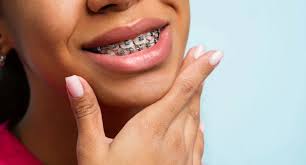Introduction
In today’s world, orthodontic braces have become synonymous with achieving a straighter, more confident smile. But beyond aesthetics, these braces play a crucial role in oral health by correcting various dental issues. Let’s delve into the details of orthodontic braces, exploring their types, benefits, and how they contribute to overall well-being.
Define the Health Topic
Orthodontic braces are dental devices used to align and straighten teeth, as well as correct bite issues. They work by applying continuous pressure over time to gradually move teeth into proper alignment.
Relevance and Importance
The significance of orthodontic braces extends beyond cosmetic improvements. Proper teeth alignment can alleviate issues like speech impairments, difficulty chewing, and even jaw pain. Additionally, it can prevent long-term dental problems such as gum disease and tooth decay.
Types and Categories
Orthodontic braces come in various types, each catering to different needs and preferences:
Traditional Braces
These are made of metal brackets and wires and are the most common type of braces. They are highly effective in correcting severe misalignments.
Ceramic Braces
Ceramic braces are similar to traditional braces but blend in more with the natural tooth color, making them less noticeable.
Lingual Braces
Lingual braces are placed on the backside of the teeth, making them virtually invisible from the front.
Invisalign
Invisalign consists of clear, removable aligners that gradually straighten teeth. They offer a more discreet option compared to traditional braces.
Self-Ligating Braces
These braces use a sliding mechanism instead of elastic bands to connect the archwire, reducing friction and discomfort.
Symptoms and Signs
Before getting braces, it’s essential to recognize signs that indicate the need for orthodontic treatment:
Crooked or Crowded Teeth
Misaligned teeth can make cleaning difficult, leading to plaque buildup and tooth decay.
Overbite or Underbite
These bite issues can cause jaw pain, difficulty chewing, and speech problems.
Crossbite
Crossbite occurs when upper and lower teeth don’t align properly, leading to uneven wear and potential jaw misalignment.
Causes and Risk Factors
Several factors contribute to the need for orthodontic braces:
Genetics
Inherited traits can predispose individuals to dental misalignments.
Thumb Sucking
Persistent thumb sucking or pacifier use can lead to dental issues, such as open bites or protruding teeth.
Early Tooth Loss
Losing baby teeth prematurely can disrupt the natural alignment of adult teeth.
Jaw Trauma
Injuries to the jawbone can affect tooth positioning and bite alignment.
Diagnosis and Tests
Orthodontic treatment begins with a comprehensive evaluation by a dentist or orthodontist:
Dental Examination
The dentist assesses tooth alignment, bite, and overall oral health.
X-Rays
X-rays provide detailed images of the teeth and jawbone, aiding in treatment planning.
Impressions
Impressions of the teeth are taken to create customized braces or aligners.
Treatment Options
Orthodontic treatment aims to correct dental misalignments and improve oral function and aesthetics:
Braces
Traditional, ceramic, lingual, and self-ligating braces are fixed appliances that gradually move teeth into alignment.
Invisalign
Invisalign uses a series of clear aligners to gradually shift teeth without the need for brackets or wires.
Retainers
After braces or Invisalign treatment, retainers are worn to maintain the new tooth position and prevent relapse.
Preventive Measures
While some dental misalignments are unavoidable, certain preventive measures can promote optimal oral health:
Early Intervention
Regular dental check-ups starting from childhood can help detect and address orthodontic issues early.
Oral Hygiene
Good oral hygiene practices, including brushing, flossing, and regular dental cleanings, can prevent tooth decay and gum disease.
Avoiding Habits
Avoiding habits like thumb sucking or nail biting can prevent dental problems and the need for braces.
Personal Stories or Case Studies
Real-life experiences highlight the impact of orthodontic treatment on individuals’ lives:
Sarah’s Journey to a Confident Smile
Sarah, 24, struggled with low self-esteem due to her crooked teeth. After two years of wearing braces, she now confidently flashes her straight smile.
John’s Relief from Jaw Pain
John, 32, suffered from chronic jaw pain due to an overbite. With orthodontic treatment, he experienced significant pain relief and improved oral function.
Expert Insights
Orthodontists provide valuable insights into the benefits of orthodontic treatment:
Dr. Emily Smith, Orthodontist
“Orthodontic braces not only enhance smiles but also improve oral function and overall quality of life. Investing in orthodontic treatment can lead to lifelong oral health benefits.”
Conclusion
Orthodontic braces offer more than just aesthetic improvements; they are essential for maintaining optimal oral health and function. By addressing dental misalignments early and undergoing orthodontic treatment, individuals can enjoy a lifetime of confident smiles and improved well-being.




